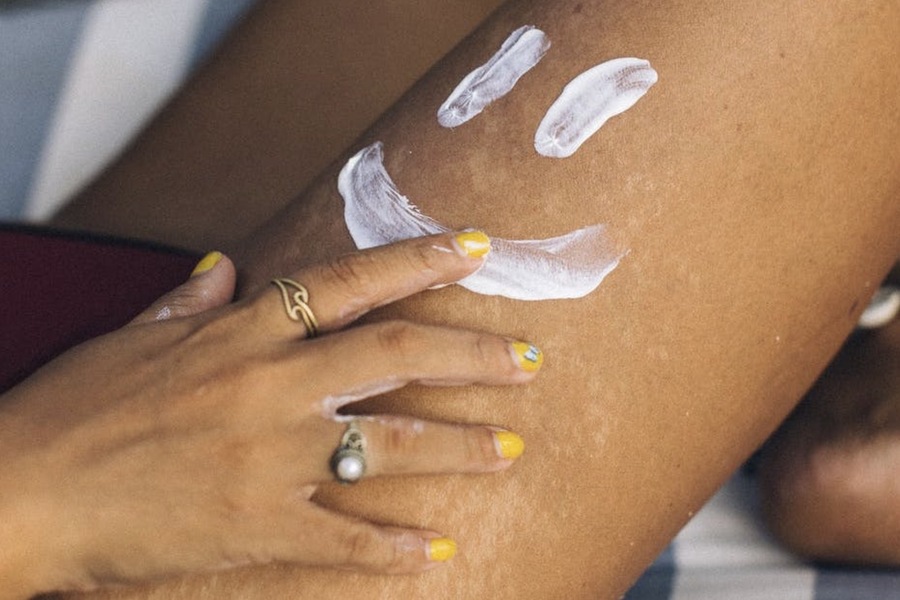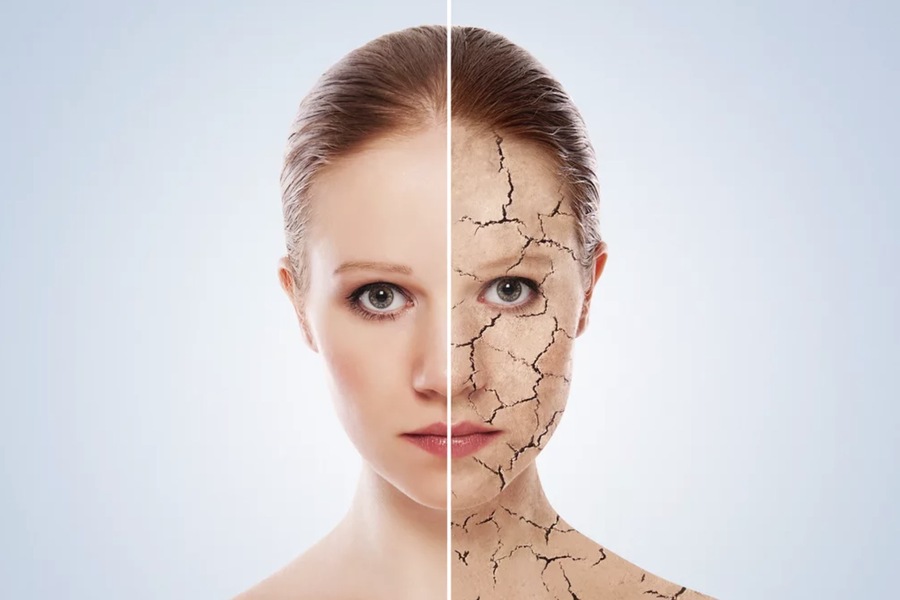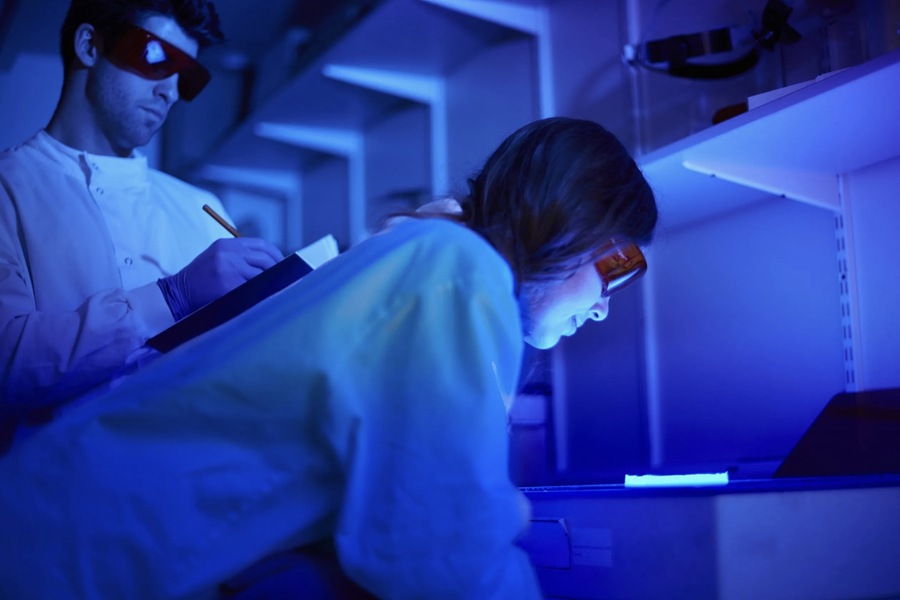The Role of Ultraviolet Radiation on Skin Health: Balancing Benefits and Risks
Ultraviolet (UV) radiation impacts the skin throughout the year, with an intensified effect in the summer months when people tend to spend more time outdoors. It’s not fair to label all sun exposure as harmful, especially given its significant health benefits, such as synthesizing Vitamin D, enhancing mood, and promoting a sense of well-being. However, these benefits come with the risk of skin damage, especially if one neglects proper sun protection. This article delves into the effects of UV rays on the skin, their benefits and potential risks, and provides tips on choosing the right protection and finding the best skin care products in UAE to enjoy the sun responsibly.
Page Content
Understanding UV Radiation and Its Effects on the Skin
Sunlight contains three types of ultraviolet radiation: UVA, UVB, and UVC rays. While UVC rays are absorbed by the ozone layer and don’t reach the Earth’s surface, UVA and UVB rays penetrate and affect our skin in different ways. Each of these rays can impact skin health uniquely.
Types of Ultraviolet Rays: UVA and UVB
The two main types of UV radiation that reach the skin have distinct effects:
1. UVB Rays: The “Surface Rays” That Cause Tanning and Sunburn
UVB rays, responsible for surface skin reactions, primarily affect the epidermis, the outermost layer of the skin. These rays play a role in Vitamin D synthesis and can contribute to a healthy tan, but their impact can be detrimental if exposure is uncontrolled.
Tanning and Melanin Production: UVB rays stimulate melanocytes, the cells responsible for producing melanin. This pigment acts as a natural defense, providing a darker color that helps protect deeper layers of skin.
Sunburn and Skin Damage: While melanin offers some protection, excessive UVB exposure surpasses what melanin can handle, causing sunburn. Signs of sunburn include redness, swelling, and pain, which indicate damage to the skin cells. Frequent sunburn can also increase the risk of cellular mutations and potentially lead to skin cancer.
Skin Cancer Risk: UVB rays are the primary culprits in the development of basal cell carcinoma, squamous cell carcinoma, and melanoma, the most serious form of skin cancer. These types of cancer can be deadly, especially if diagnosed late.
2. UVA Rays: The “Deep Penetrating Rays” and Their Role in Aging
UVA rays account for 95% of the UV radiation that reaches the Earth’s surface and penetrate more deeply into the skin, affecting the dermis, the layer where collagen, elastin, and other vital proteins are located.
Photoaging and Skin Degradation: UVA rays contribute significantly to photoaging, a form of premature aging caused by prolonged exposure to UV rays. This process leads to wrinkles, sagging, dryness, and a loss of elasticity. As UVA rays damage collagen and elastin, the skin gradually loses its ability to stay firm and smooth.
DNA Damage: UVA rays penetrate deeply enough to reach and damage DNA in skin cells, increasing the risk of mutations that can lead to skin cancers over time.
Pigmentation and Dark Spots: UVA rays stimulate melanin production in an irregular manner, resulting in pigmentation disorders and age spots. These spots are often mistaken for harmless “sun freckles” but indicate prolonged sun exposure.

The Cumulative Effect of UV Exposure
The most concerning aspect of UV damage is its cumulative nature. Sun exposure accumulates over a lifetime, which means each moment spent in the sun, whether during childhood or adulthood, adds to a growing “sun debt” that can later manifest in visible skin damage or skin cancer. The visible effects, such as wrinkles, sagging, and age spots, may not become apparent for years, making it easy to overlook the importance of daily protection.
Health Benefits of Sun Exposure
While there are significant risks associated with UV exposure, moderate sun exposure also provides essential health benefits. Balancing these benefits and risks requires informed choices and appropriate protection.
1. Vitamin D Synthesis
Vitamin D, synthesized when skin is exposed to sunlight, is crucial for bone health, immunity, and overall wellness. Vitamin D deficiency has been linked to various health issues, such as osteoporosis, cardiovascular disease, and weakened immune function. Studies suggest that around 15-30 minutes of unprotected sun exposure two to three times a week may be sufficient for healthy Vitamin D levels. However, for people in northern regions or those with limited sun exposure, supplements or fortified foods may be necessary.
2. Mood Enhancement
Exposure to sunlight has been shown to improve mood by boosting the production of serotonin, a hormone associated with feelings of happiness and well-being. Light therapy, which mimics sunlight, is often used to treat Seasonal Affective Disorder (SAD) — a type of depression that occurs in the winter months.
3. Improved Sleep
Exposure to natural light during the day supports a healthy sleep-wake cycle. Sunlight helps regulate melatonin, a hormone responsible for sleep quality. Natural light exposure during the day promotes melatonin production at night, improving the quality and regularity of sleep.
Sun Protection Products and Their Benefits
Given the varied effects of UV radiation, protecting the skin with suitable products is essential. A range of sun protection products are available, each designed to suit different needs, skin types, and lifestyles:
1. Sunscreen Creams
Creams offer a protective barrier against dehydration and are ideal for dry and normal skin types. These formulations typically contain emollients and humectants, which help retain moisture in the skin while providing UV protection.
2. Sunscreen Sprays
Sprays provide a convenient and fast application for the entire body, allowing for even distribution of protection. They are especially useful for hard-to-reach areas, like the back, and are popular for quick reapplication.
3. Sunscreen Sticks
Sticks have a dense texture and are well-suited for precise application on sensitive areas, such as moles, age spots, or areas around the lips. They are also handy for touch-ups on high-exposure areas like the nose and cheeks.
Choosing the Right Sunscreen: Key Considerations
Selecting the right sunscreen is essential for effective protection, as different formulations are suited to various skin types and environments. Here are some important factors to keep in mind:
Broad Spectrum Protection
Opt for products labeled “broad spectrum,” which protect against both UVA and UVB radiation. This ensures that the sunscreen shields the skin from both surface and deeper damage.
Skin Type and Texture Preference
For oily or acne-prone skin, choose lightweight, oil-free formulations like gels, fluids, or water-based creams labeled “non-comedogenic,” which means they won’t clog pores.
Dry skin types benefit from richer creams that provide additional moisture and can prevent dehydration.
Additional Benefits
Many sunscreens now include antioxidants, such as vitamin E or green tea extract, which can help neutralize free radicals generated by UV exposure. Others may offer a mattifying effect for oily skin or extra hydration for dry skin.
Water Resistance
If you’re planning on swimming or exercising outdoors, choose a sunscreen labeled “water-resistant” for continued protection. However, remember that even water-resistant sunscreens should be reapplied after swimming or excessive sweating.
Avoiding Irritating Ingredients
For sensitive or allergy-prone skin, avoid products with fragrances, parabens, or oxybenzone, which may trigger irritation. Hypoallergenic formulas are typically less likely to cause reactions.
Understanding SPF Levels and Their Significance
SPF, or Sun Protection Factor, is a measure of how well a sunscreen protects against UVB rays, the primary cause of sunburn. The SPF number indicates the theoretical amount of time you can stay in the sun without burning compared to unprotected skin. Here’s a breakdown of SPF levels and their typical usage:
Low Protection (SPF 10–15): Offers basic protection for brief sun exposure, suitable for daily urban use.
Moderate Protection (SPF 15–25): Suitable for moderate exposure, like an outdoor event or a picnic in the shade.
High Protection (SPF 30–50): Ideal for prolonged sun exposure, such as beach trips or hiking, providing robust defense against UV radiation.

Types of UV Filters: Physical and Chemical Sunscreens
Sunscreens use either physical or chemical filters — or sometimes a combination — to block or absorb UV radiation. Here’s a look at each type:
1. Physical (Inorganic) Filters
Physical filters like titanium dioxide and zinc oxide act as a barrier, reflecting UV rays away from the skin’s surface. These ingredients are well-tolerated by sensitive skin and are effective immediately upon application.
2. Chemical (Organic) Filters
Chemical filters, such as avobenzone and octocrylene, absorb UV radiation and convert it into heat. These formulas are generally lighter in texture, making them ideal for daily use on oily or acne-prone skin.
Essential Sun Protection Tips
In addition to sunscreen, adopting safe sun habits further enhances skin protection:
Wear Protective Clothing: Long sleeves, wide-brimmed hats, and sunglasses provide an extra layer of protection.
Seek Shade During Peak Hours: Between 10 a.m. and 4 p.m., UV rays are strongest. Stay in shaded areas whenever possible.
Reapply Sunscreen Every Two Hours: Sunscreen efficacy decreases over time, especially after swimming, sweating, or towel drying.
Use Extra Care Near Reflective Surfaces: Sand, water, and snow can intensify UV exposure by reflecting sunlight back onto your skin.
Conclusion: Embracing a Balanced Approach to Sun Exposure
While the sun offers numerous health benefits, such as Vitamin D production, improved mood, and enhanced sleep quality, prolonged exposure without protection can have serious consequences for skin health. By understanding the effects of UVA and UVB rays, choosing suitable sunscreens, and adopting safe sun habits, you can enjoy the sun responsibly. Embracing sun protection year-round not only helps prevent photoaging and dehydration but also reduces the risk of skin cancers, enabling you to benefit from the sun’s positive effects while minimizing harm.
Surfer, traveler, DJ, Bauhaus fan and doodler. Operating at the junction of beauty and mathematics to create not just a logo, but a feeling. Nothing ventured, nothing gained.

